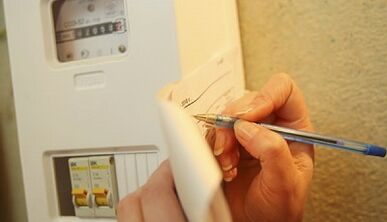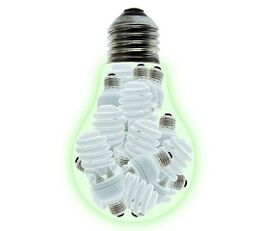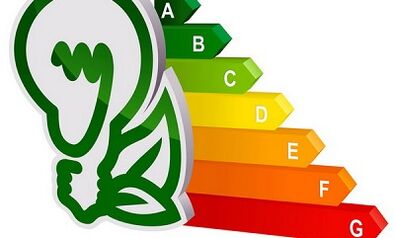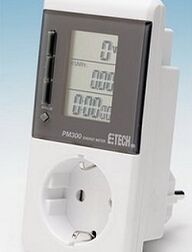The subject of electricity economy excites a lot.People continue to look for all known (and always unknown) ways in how to do it more effectively.Today we will share effective means.
Of course, some of these methods are obvious, and many have used them for a long time, but, however, the resulting information obtained and present in the form of a small instruction for careful consumption of electricity.
Method 1. Do we really need so much light?

All incomparable statistics say that 14% of all the electricity generated is spent for lighting.But do we always use this incredible quantity of additional energy without harming ourselves?How to learn how to do it correctly?
These simple tips can help you with this:
- Use the electric light as much as possible.We do not invite you to come back in the primitive period, when people have only a diurnal lifestyle (although this is undoubtedly useful for our health: doctors have proven that an active nightlife and artificial lighting are chronic fatigue, depression and exacerbation of chronic diseases).
- Remember that the level of lighting of the room is affected by the quantity of contaminated lighting.It is clear that the cap in the kitchen, which has not been washed for several months, will be covered with a layer of dust and fat and it will be very bad to pass the light.And the pure lighting devices considerably illuminate the room, which means that you can use bulbs.
- Do not forget the clean windows.Natural light and sunlight report not only the time to light the lighting devices, but also to warm your room during the cold season.
- It can be used when lighting the room, for example, combined lighting: do not light all the bulbs of the chandelier at the same time or do not go in combination: a table lamp (floor lamp) and 1-2 bulbs of a chandelier.
- Modern energy saving devices can help the economy of electricity: gradators (rotating light regulations that gently modify the level of light), motion sensors, impulsive relays, digital switches.An integrated automatic stop system works very effectively in the input.
- We use energy lights (compact fluorescent LEDs).
- And very simple - turn off the light when you leave the room (in fact, it is probably the most difficult - in many houses, there is a constant "war", because everyone forgets to turn off the light).
A little on the advantages of energy saving lamps:
- More efficient electricity consumption (compared to energy incandescent lamps 4 to 5 times less).
- Large lighting outlet: an energy saving bulb with a capacity of 12 W in terms of light intensity is approximately equal to 60 watts of an ordinary incandescent lamp.
- It does not emit thermal energy in large quantities (this property can be used in small lighting devices) and distributes light more uniformly and gently (the usual bulb does not exceed 10% of the energy consumed in light and the rest in the thermal).
- The lifespan of energy saving bulbs, as a rule, is longer.Although it does not always correspond to the lifespan of the manufacturer declared.
Admittedly, the latter is sometimes due to the fact that we do not quite use certain types of energy saving bulbs.Most often, they are exhausted in places where they are used for a short period and where the mode is very often changed: "lit" - "off".

If you make a progressive replacement of the bulbs, it is best to start with parts where the bulbs work for a long time.In addition, frequent voltage overvoltages in the sector, high or, conversely, very low temperature, very much affect the work period.It should be kept in mind that certain energy saving lamps (fluorescent) cannot be used in devices with the lighting brightness adjustment.
Over time, we must all go completely to energy saving bulbs, because the energy conservation law indicates that incandescent lamps will be completely removed from traffic and replaced by more economical sources of light.Therefore, it is better to start doing it in advance, because the immediately replacement of all the bulbs is quite posed.
The undeniable disadvantage of energy saving bulbs is always a high cost (although now they are already much cheaper than, say, 3-4 years ago), not always of good quality and that, unfortunately, we lack points for the reception of lamps (and such savings are very dangerous for us and ecology).
Well, if you can't replace ordinary energy bulbs, use at least smaller bulbs.
Method 2. Multiple metariffs
The question of the use of multi-tale meters, of course, is not unambiguous.But if we take into account that some household appliances operate 24 hours a day (refrigerator) or almost constantly in "sleep" mode (television, computers), then taking into account their work at night, it can always be beneficial not only for work fans at night.
In addition, modern multi-tariff meters take into account electricity much more precisely than induction.
Method 3. Useful savings
First of all, do we think if we use household appliances correctly?
The result of these thoughts for many of us will be disappointing.Experts have already been proven by experts that household appliances often consume much more electricity than they need normal operation.
As we have already discovered, many household appliances (microwaves, televisions, power supply, audio and video equipment, water heater, computers, air conditioners and a dozen other devices) consume electricity not only in working condition, but also in "pending" mode or, as we often say, in "sleep" mode.
Each of these devices consumes a lot of electricity separately.But if you summarize the consumption of all the devices that work in the "sleep" mode in our apartments, not at all small amounts for payment on the accounts.
Thus, for example, working hours in the "waiting" mode for the average of the TV are 7 pm, for the microwave 23.8 hours, for a compact-23 hour competition per day.
As a result, it represents 5 to 10% of total electricity consumption in the apartment.
And what is the outing?And the output is very simple.Always turn off the apparatus of the socket that is not used.
Method 4. Technology miracles

Obviously for everyone: you cannot save a lot with an old refrigerator or a television.The appliances produced 15 to 20 years ago consume electricity 2 times more.
A way to get out of this situation: buy modern energy appliances.How to know how energy is this device.
To do this, study the energy efficiency label carefully, which should be on household appliances.It has a letter panels from A (the highest class of energy efficiency) to G (lowest).
In modern devices, electricity consumption, even in "waiting" mode, is much lower than that of obsolete models.
As an indicative example of energy economical technology, for example, "intelligent" dishwashers or washing machines, which automatically dose detergents, water consumption, choose the desired diet.According to experts, these devices consume 44% less energy and 62% of water than obsolete models of the late 90s.
It is not worth convincing the advantages of modern technology.But that if everyone cannot afford to replace old household appliances with a new one (generally expensive)?How can I reduce electricity costs in this case?
Method 5. We use what we have
Fridge
How to use the refrigerator, probably everyone knows.But, however, we obstinately continue to put it next to the batteries, the stove or near the wall on the sunny side.
But it is obvious that, heated from heat sources nearby, the refrigerator for effective work will consume more electricity.
In addition, it is desirable that in the room where the refrigerator is located, it is not hot (about 18-20 degrees), the refrigerator must be regularly thawed and released from ice, check its tender (sealing on the doors of the refrigerator), do not put the wall for better air circulation.
In addition, you should not buy a large refrigerator simply because it is in fashion or is the same with a neighbor in the kitchen (proceed by the number of family members and its needs).The greater the refrigerator, the more energy it consumes.
Vacuum cleaner
For the normal operation of a vacuum cleaner with less electricity consumption, it must be regularly cleaned up of the accumulated dust (Dirty consumes 15 to 20% more) and take into account that it uses the most electricity when you turn on and deactivate (if you aspire the small room, try not to go out too often).
Electric stove
An electric stove consumes a lot of electricity.How can I reduce electricity costs in this case:
- Do not warm the oven in advance, if it is not provided for a recipe for cooking a dish.
- Use the residual heat of the chimney (turn off 5 to 10 minutes before the end of cooking).
- Close the pots with lids.
- Do not use excess water when cooking vegetables and eggs.
- Use good dishes with a flat bottom and the size of the burner.
- Use pressure cooks.
- Use an electric kettle (it consumes less electricity than an electric stove), while buying a sufficient electric kettle in volume for the whole family and pour as much water as you use both.
- Use a microwave and toaster, in which you can cook a dish just as tasty and crisp in a few minutes as in the oven.But it is much faster and, therefore, is more economical.
Washing machine
The washing machine spends up to 15% of domestic electricity.Use all the possibilities of economic electricity consumption, which are provided by the instructions for your washing machine:
- Rapid and economic washing modes.
- Complete load, but without overload (excessive load increases electricity consumption to 10%).
- Lower temperature (you should not always be washed at high temperature).
- Correctly selected operating mode of the machine.
Iron
- Here, you can also use the principle of residual heat, that is to say extinguish the iron 5 to 10 minutes before the end of ironing.
- Do not dry the linen: to caress it, you will have to spend more time and, therefore, use more electricity.
- The unexpected lin will also require additional electricity consumption.
- Use irons with an automatic stop function.
- Use the modes to iron different types of fabric correctly.
Air conditioners
- Set the temperature enough to correctly cool the part.
- Before turning on, make sure that all windows and doors are closed.
- When buying an air conditioner, focus on the size of the room and the number of people who will be there.The device, designed for a large area, simply "eat" electricity without any advantage.
- Regularly clean the fans and filters.
Computer
Almost everyone has computers today and not even in the family.And, it is clear that this considerably increases electricity costs.
What can we do?
- Reduce the monitor's brightness (this affects energy consumption).
- Turn off the computer if you don't use it for a long time.
- Light all the peripheral devices (scanners, printers, modems) via the network filter and always turn off when these devices do not work.
- If possible, use liquid crystalline monitors.
- Use a laptop more often (it "eats" less energy than a stationary computer).
Radiators
The cold in the street and at home makes us get the radiators of the pantry.Is there no warmth in the house?What to do?Furify and be reluctant to get sick.You must therefore include "eater" electricity - radiators.
In order to somehow reduce the time to use the radiator, you must isolate everything possible: windows, walls, floors, etc.Of course, plastic windows do this task well.Well, if the windows are ordinary, try to close all cracks and cracks in window frames.It is through them that up to 50% heat disappears.The same thing must be done with the entrance doors.
And if the central heating is already on, but is it still cold?
There may be many reasons.But in some cases, the simple washing of old batteries, replacing or increasing their heat transfer due to the increase with additional sections can help.
Well, try to use the radiators, if possible, so as not to use, they are very "voracious".
In addition, as an additional heat source in the apartment, you can consider a heated towel rail, which is connected to the hot water supply.
Interesting on the same

There is a very useful device.His name is "Watt Métage".
Why is it necessary?This will help save electricity.With the help of this small device, you can learn a lot of interesting things on the work of their household appliances and generally on electricity expenses in the house.
For example:
- How much do you pay for a computer that does not go out all day?
- How much electricity consumes your refrigerator and is it time to change it into a new one?
- How much electricity is consumed when you wash the dishes in the dishwasher, wash your laundry, caress or dry your hair?
- How much energy consumes your TV in the state outside the state?
You will receive an answer to all these questions and many others, and you will also discover the amount of electricity spent without advantage and what you can really save.
Obviously, the safeguarding of electricity is not so difficult.The main obstacle, probably, consists of ourselves.As soon as we realize that not waste electricity in vain is profitable, first of all, for us - we will succeed.
























